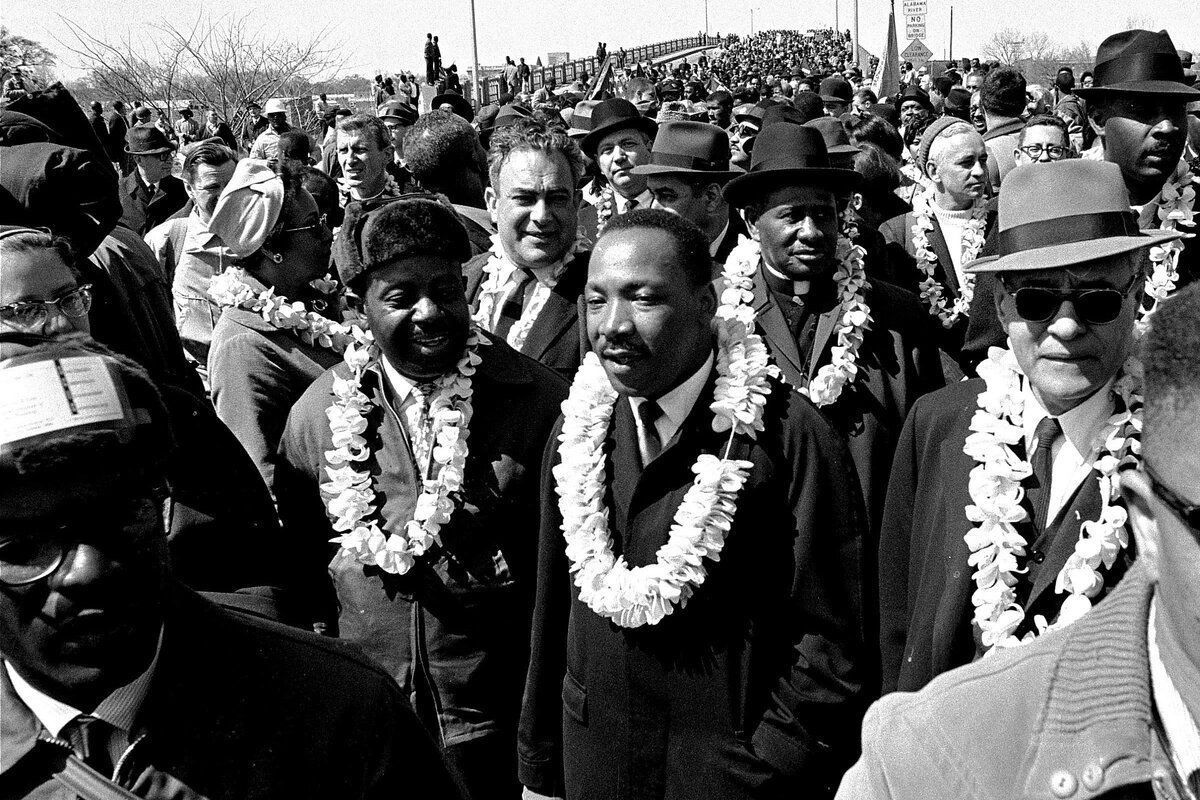The Forgotten King: Commentary on protest, race, and MLK
Loading...
There is an unholy invocation that rises from some Americans in times of racial distress. It is an exclamation from the voices of the status quo, the clarion call of conservative thinking:
What would Martin Luther King do?
It is as unauthentic and uninspiring as it is ambiguous – and that is the point. Reducing Dr. King’s understanding of racial and social issues to a warped perspective of the “I Have A Dream” speech is propagandist and ahistorical, but it has worked.
Why We Wrote This
As U.S. cities writhe in protest, columnist Ken Makin urges Americans to reach beyond the impulse to judge protesters and instead consider the roots of rage feeding the unrest. The point isn’t rioting, he says. The point is injustice.
It is easy to celebrate the “I Have A Dream” refrain and the final paragraph of Dr. King’s speech from the perspective of all lives matter:
And when this happens, when we allow freedom to ring, when we let it ring from every village and every hamlet, from every state and every city, we will be able to speed up that day when all of God’s children, black men and white men, Jews and Gentiles, Protestants and Catholics, will be able to join hands and sing in the words of the old Negro spiritual, “Free at last! Free at last! Thank God almighty, we’re free at last!”
But what about black lives? How would Dr. King feel about the modern-day anti-police-brutality protests? How would he respond to the deaths of George Floyd, Trayvon Martin, and so many more? Long before he declared that a riot was “the language of the unheard,” he spoke about black unrest. Where? In the “I Have A Dream” speech:
It would be fatal for the nation to overlook the urgency of the moment. This sweltering summer of the Negro’s legitimate discontent will not pass until there is an invigorating autumn of freedom and equality. Nineteen sixty-three is not an end, but a beginning. And those who hope that the Negro needed to blow off steam and will now be content will have a rude awakening if the nation returns to business as usual. And there will be neither rest nor tranquility in America until the Negro is granted his citizenship rights. The whirlwinds of revolt will continue to shake the foundations of our nation until the bright day of justice emerges.
“The issue is injustice”
Even now, a narrative is being created in the midst of the protests. Gatherings are being validated or invalidated based on whether they are “peaceful.” This narrative avoids the perpetual provocation of the police – the actions leading up to this moment and the military-style response to protesting. Dr. King addressed this willful ignorance in his final speech, “I’ve Been To The Mountaintop”:
Let us keep the issues where they are. The issue is injustice. The issue is the refusal of Memphis to be fair and honest in its dealings with its public servants, who happen to be sanitation workers. Now, we’ve got to keep attention on that. That’s always the problem with a little violence. You know what happened the other day, and the press dealt only with the window-breaking. I read the articles. They very seldom got around to mentioning the fact that one thousand, three hundred sanitation workers were on strike, and that Memphis is not being fair to them, and that Mayor Loeb is in dire need of a doctor. They didn’t get around to that.
Dr. King didn’t bury the lede. The lede isn’t rioting – the lede is injustice. Dr. King was not an advocate of riots, but understood why they happened. His physical actions and his declarations confirmed his empathy with people who felt desperate enough to riot.
When Dr. King stood in solidarity with striking sanitation workers in Memphis, he didn’t just highlight disrespectfully low wages. He highlighted the disrespect shown to black people and the determination to be treated as “men,” as “people.” It is a fight that continues in places like New Orleans, where less than a month ago, striking sanitation workers making $10.25 an hour were replaced by prison labor in the midst of the COVID-19 pandemic.
The economic angst surrounding current protests is a rarely-mentioned perspective. More than 40 million Americans are unemployed. The minimum wage is woefully and pitifully low. The rush to “reopen” in the midst of a prevention-less and vaccine-less response to the pandemic is inhumane and treats “essential workers” as if they are expendable.
Dr. King captured it all in his final speech, which wasn’t presented in the face of dignitaries, nor held at the nation’s capital. It was a commentary shared with workers in the heart of a labor protest the day before he was assassinated. He was so “dangerously unselfish” in a moment where he addressed injustices all over the world. He touched on class warfare in a way that was true to his religious roots — with a powerful parable. He spoke boldly about life and death — and the urgency of both.
A nation “torn between selves”
Many people have forgotten this Dr. King – the man who outlined the reasons “Why We Can’t Wait.” His last full-length book asked a question which is being answered in our government and in our streets: “Where Do We Go From Here: Chaos or Community?” An excerpt from the latter explains how this country chose chaos long before the protests and riots of the last fortnight began:
Ever since the birth of our nation, white America has had a schizophrenic personality on the question of race. She has been torn between selves – a self in which she proudly professed the great principles of democracy and a self in which she sadly practiced the antithesis of democracy. This tragic duality has produced a strange indecisiveness and ambivalence toward the Negro, causing America to take a step backward simultaneously with every step forward on the question of racial justice, to be at once attracted to the Negro and repelled by him, to love and to hate him. There has never been a solid, unified, and determined thrust to make justice a reality for Afro-Americans.
It is time to remember the real Dr. King — a prince who petitioned on the behalf of paupers. It is time for America to change her modern-day propagandist view of a conservative King and, through public and personal education, acknowledge the genius and the entirety of Dr. King’s racial and social understandings. In his time, Dr. King’s words weren’t always popular, but they were prophetic.
Ken Makin is a freelance writer and the host of the Makin’ A Difference podcast. You can follow him on Twitter @differencemakin.







